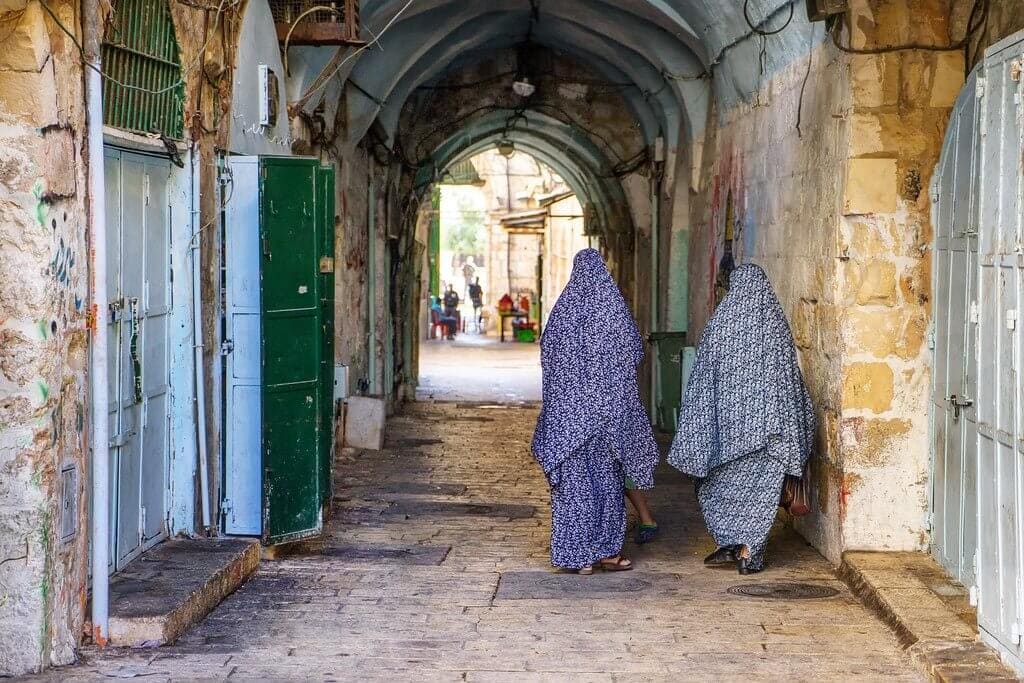
Jerusalem, Israel
Jerusalem is one of the oldest & holiest cities in the world, home to important religious sites for Muslims, Jews, and Christians. These are some of the most sacred sites you can visit there.
All three of the world's major monotheistic faiths consider Jerusalem sacred, and the city is full of fascinating holy sites to visit.
You don't have to be religious to appreciate the city's tumultuous past & cultural significance either.
I spent a few days exploring the Old City, which has been fought over for centuries -- you can still see bullet holes scaring the city's stone gates.
Jerusalem is a magnet for both conflict & spiritual inspiration.
In no particular order, here are the 3 most important religious sites in Jerusalem, including tips for visiting and intriguing history about them.
Top Religious Sites In Jerusalem
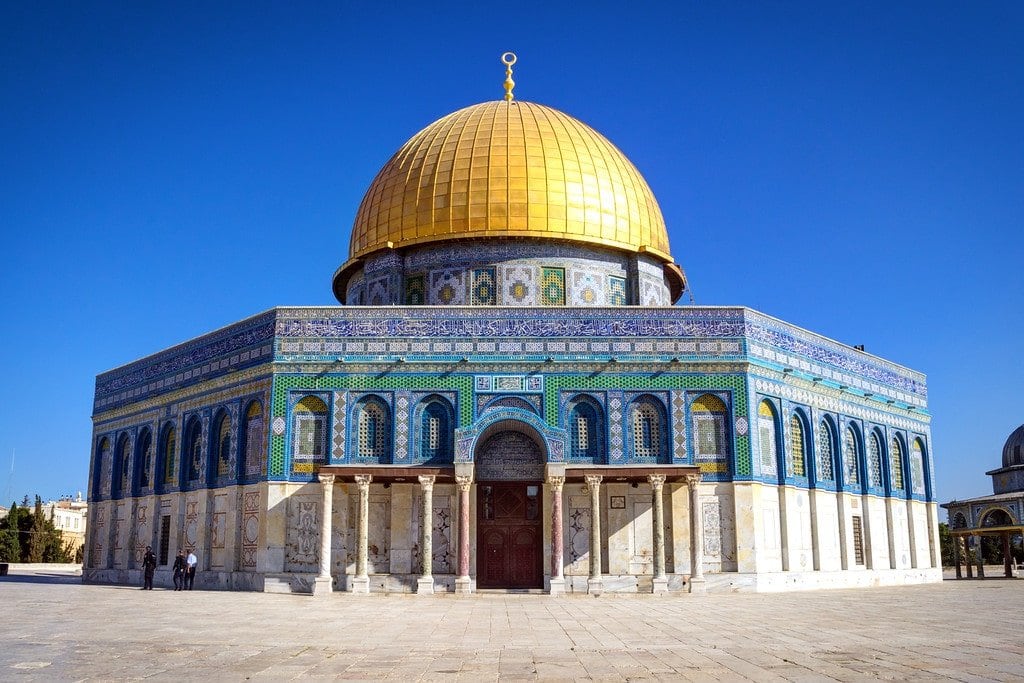
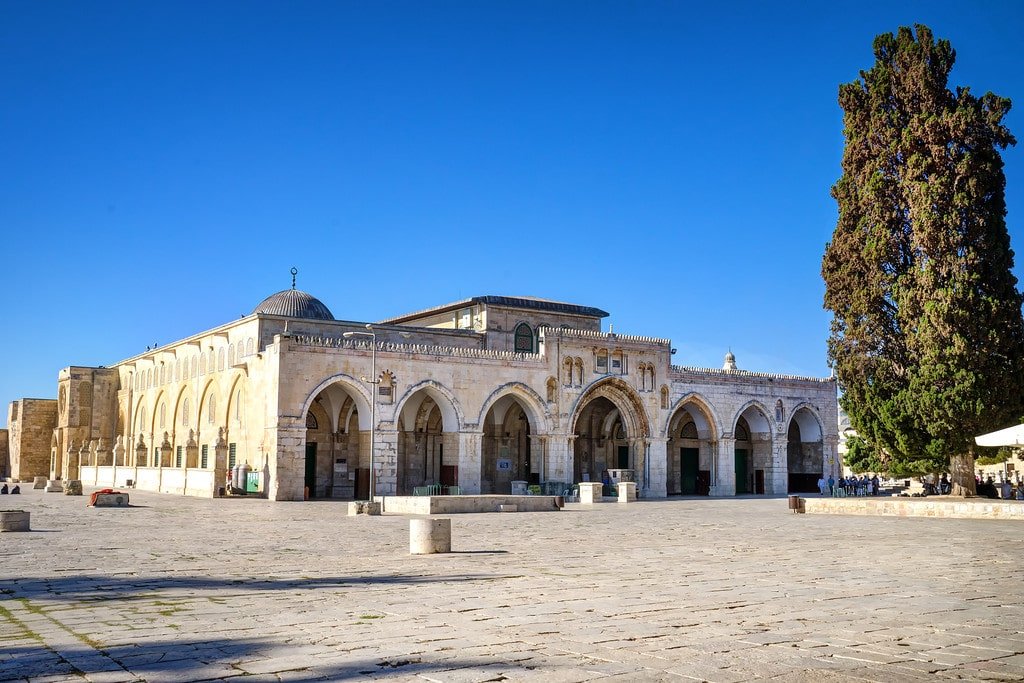
The Temple Mount (Haram al-Sharif)
The Temple Mount is a massive plaza of stone in the South East corner of Jerusalem's Old City surrounded by date palms and cypress trees. Arguably the most holy place in the city, it has major significance to all 3 religions (Islam, Judaism, and Christianity).
It's thought to be Mount Moriah, where Abraham offered to sacrifice his son Isaac to God. Today on the Temple Mount complex you'll find 2 important Islamic structures, the Dome of The Rock & the Al-Aqsa Mosque.
For Jews, the Temple Mount was the location of the First Temple, built by King Solomon in 957 BC to house the Ark of the Covenant (which held the Ten Commandments) in a special room called "The Holy of Holies".
It's the most sacred site in Judaism, and the Foundation Stone under the dome is where Earth was first created.
For Muslims, Haram al-Sharif (Noble Sanctuary) is the 3rd holiest site in Islam after Mecca & Medina in Saudi Arabia. The rock under the dome is where the Prophet Muhammad left Earth to visit heaven on a winged horse during his Night Journey in the 7th Century. It was also the direction of Islamic prayer before God allowed Muhammad to pray towards Mecca instead.
For Christians, the Temple Mount is significant because the Jewish temple located here was where Jesus prayed daily & later preached with his disciples.
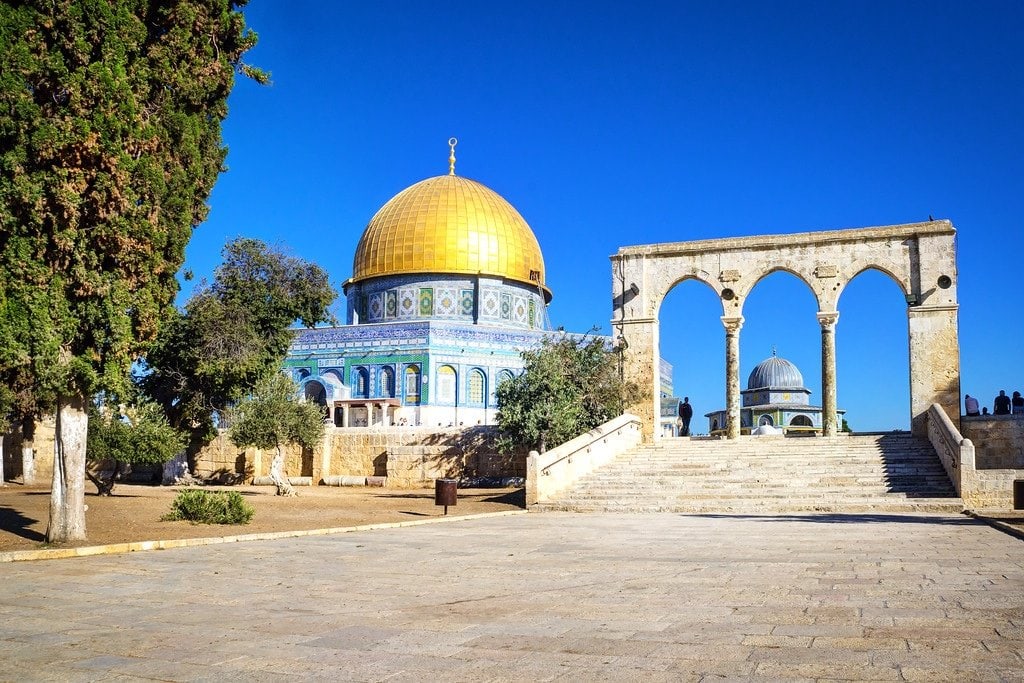
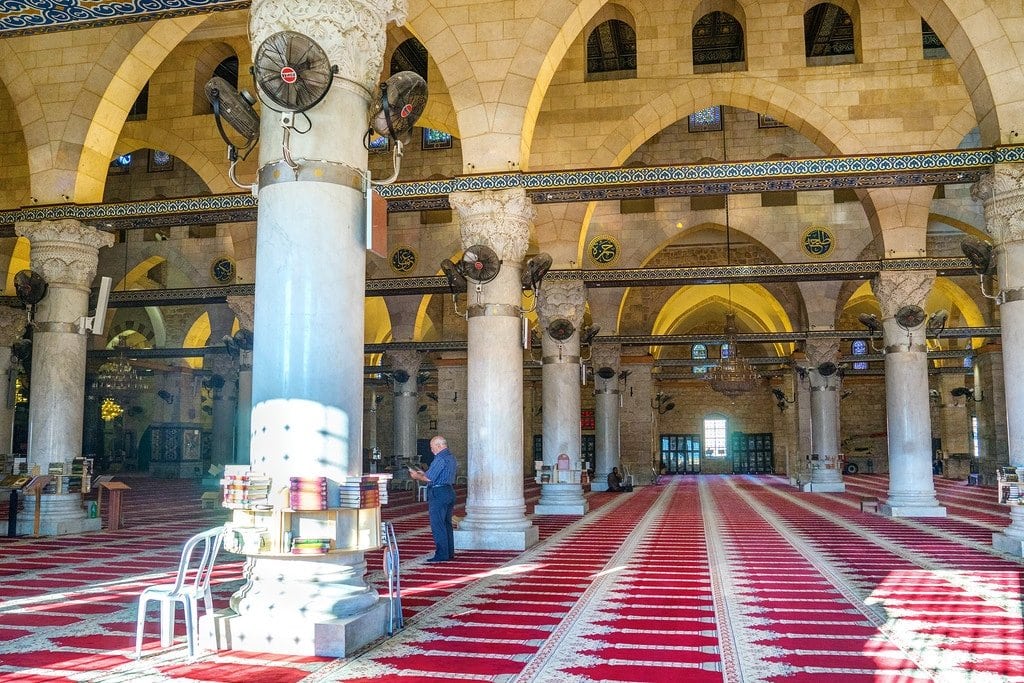
Tips For Visiting
The Temple Mount is a controversial & culturally significant place. Israel took control of the Old City in 1967, but Muslims continue to manage the site. However armed Israeli soldiers patrol inside. It's a regular flashpoint for protests & violence between Jews & Arabs.
Tourists can usually visit the Temple Mount, but there are restrictions. The entrance for non-Muslims is at Mughrabi Bridge (an enclosed wooden ramp) near the Western Wall. It's a religious site, so modest dress is required.
You must pass a security checkpoint with metal detectors, and certain religious artifacts are not allowed in (Bibles, crosses, Star of David, etc.)
Tourists can walk around the plaza taking photos, but are currently not allowed inside the Dome of the Rock or the Al-Aqsa Mosque after a fire was set inside the mosque by a Christian extremist many years ago.
However you can peek inside Al-Aqsa from a window on the side of the building. Jews can visit the Temple Mount, but they can't pray openly. When I was there, Jews were guarded by armed Israeli soldiers and greeted with chants of Allahu Akbar (God is Great) from groups of praying Muslims nearby.
There is definitely tension in the air, but it didn't feel overly dangerous.
Temple Mount Hours
- Closed to non-Muslims on Fridays & Saturdays
- Open 7:30am - 11am and 1:30pm - 2:30pm
- Sometimes closed due to tensions between Jews & Arabs
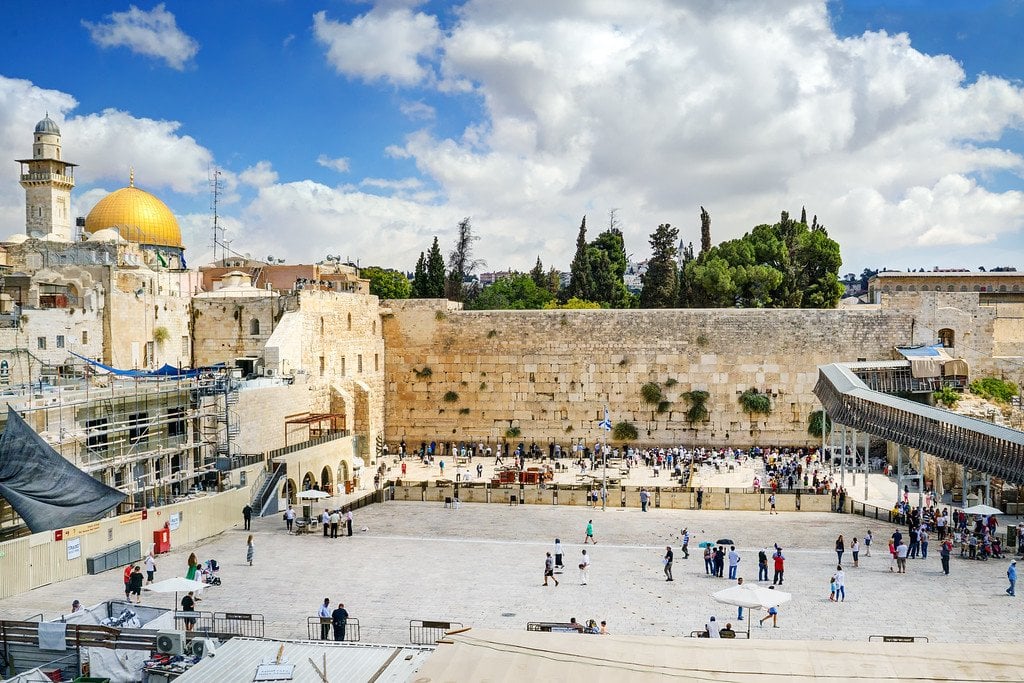
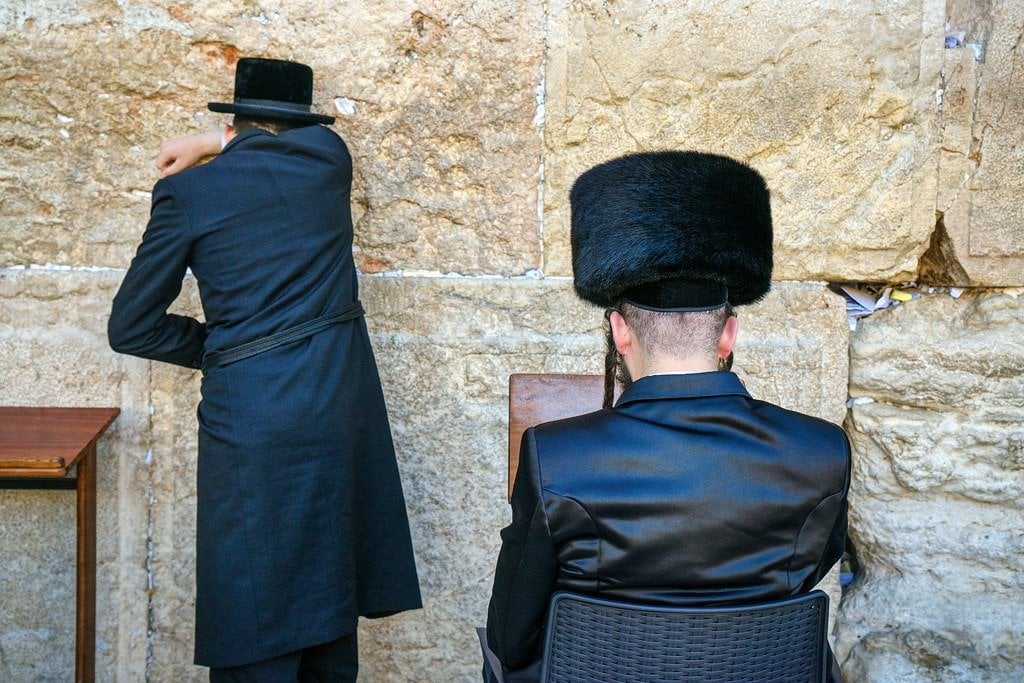
The Western (Wailing) Wall
The Western Wall is an ancient stone retaining wall built for the 2nd Temple that surrounds the whole Temple Mount plaza. Also called the Wailing Wall, it's believed to be the closest spot to Solomon's original temple and the Holy of Holies (or Gate of Heaven), the place where Jewish prayer is directed.
For Muslims, the Western Wall is known as the Buraq Wall, where the Prophet Muhammed tied his winged horse Buraq.
Prayer notes are frequently left between crevices of the huge 2 - 8 ton stones, Bar Mitzvahs are held here, and you'll find people praying 24 hours a day. There's a separate women's prayer area off to the right side. Only a small section of the Western Wall is visible, the rest extends underground.
The Western Wall was captured by Jordan during the 1948 Arab-Israeli War and Jews were restricted from visiting for 19 years. However it was recaptured by Israel during the 1967 Six-Day War, with the Israeli military bulldozing all the Arab homes in front of it.
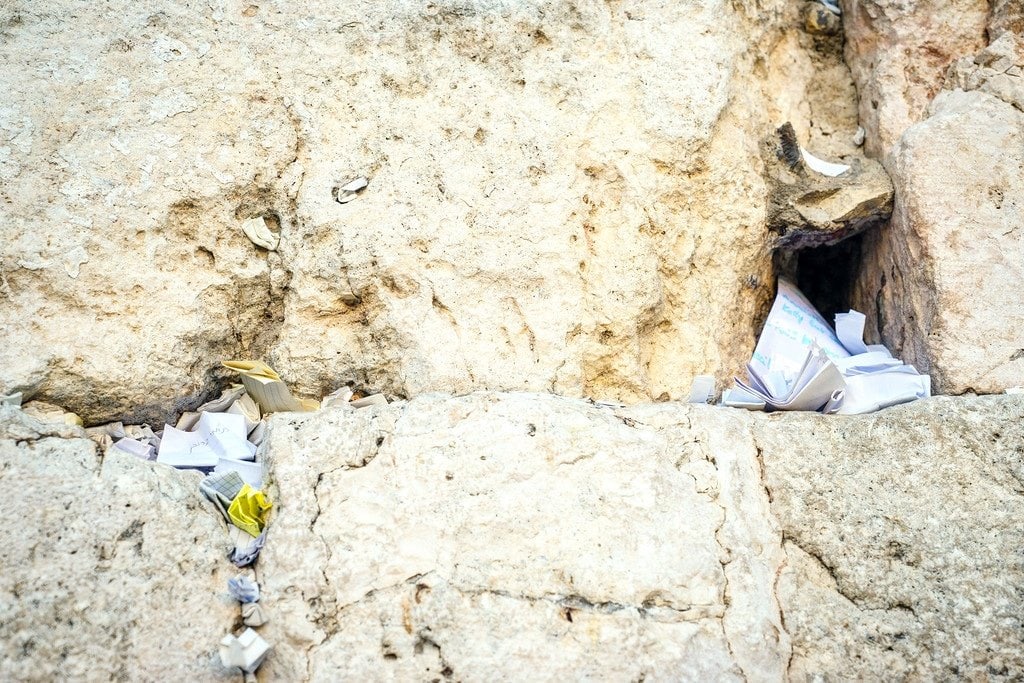
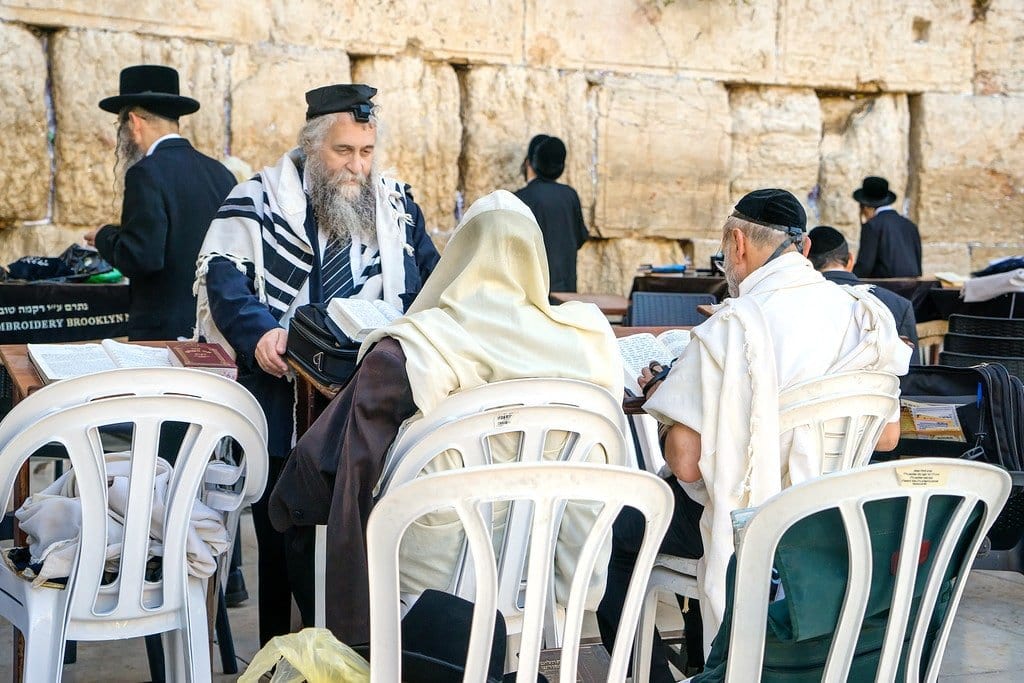
Tips For Visiting
Visitors to the Western Wall are expected to wear a kippa (skull cap) freely provided at the entrance, and dress modestly as if they were visiting a synagog. As with the Temple Mount, there is a security checkpoint with metal detectors. Cameras & electronic devices are not allowed on Saturdays, the Jewish sabbath.
Jewish custom is to backup as you leave the wall, but this isn't mandatory. There are cool underground tunnels which allow you to see much more of the structure, the entrance is at the left corner of the visible wall.
Western Wall Hours
- Open 24 hours a day, every day
- Tunnels are open Sunday - Thursday, 7am - Afternoon
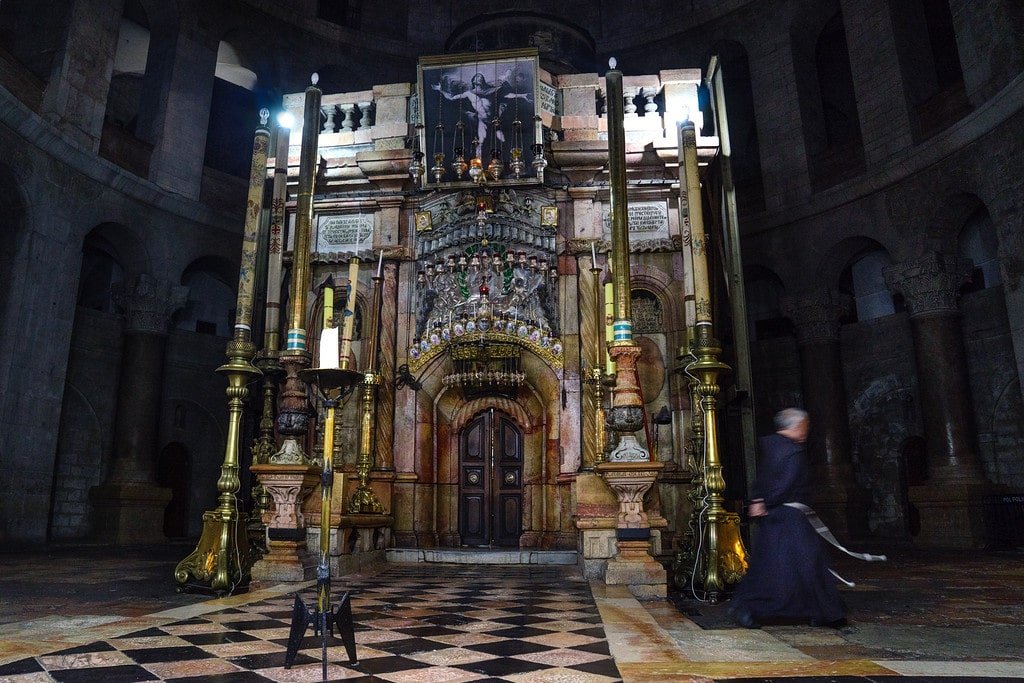
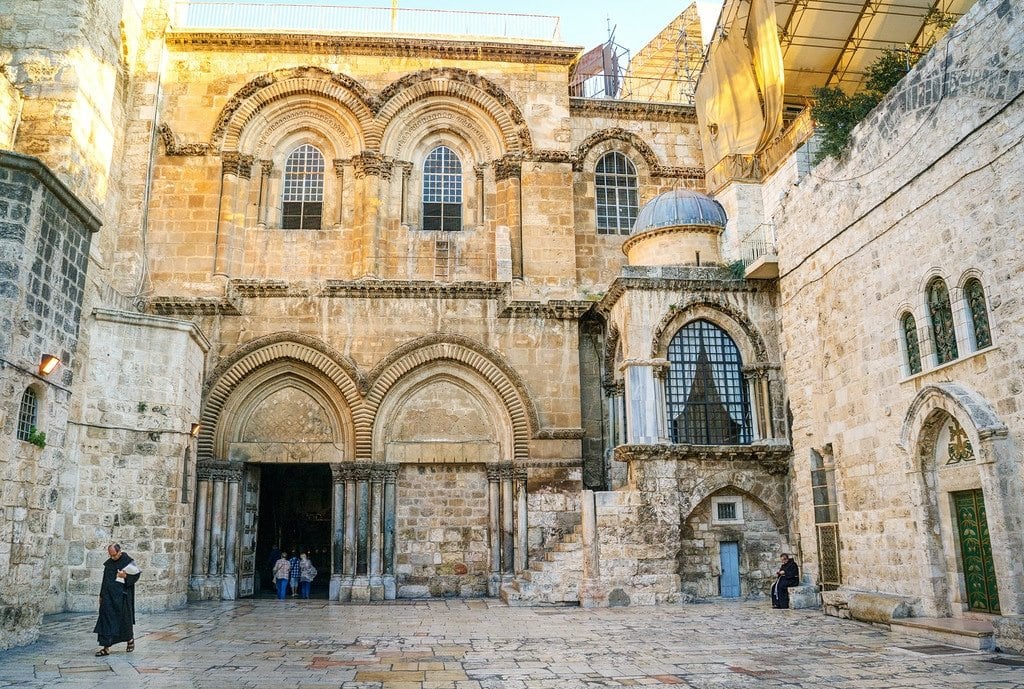
Church Of The Holy Sepulchre
The Church of the Holy Sepulchre marks the spot where Jesus was crucified, buried and resurrected. It's one of Christianity's most important religious sites. There are a few significant things to see in the church.
The Stone of Anointing is found at the entrance, where Jesus was anointed before burial. Up the stairs to the right is Calvary, the hill where Jesus was crucified. Beneath the crucifixion altar is a hole said to be where his cross was raised.
Under the main rotunda you'll find the Aedicule, an enclosed chapel built over the tomb of Jesus. It also holds the Angel Stone, a fragment of the round stone door used to close the tomb.
Armed crusaders visited the church as pilgrims during the First Crusades, leaving behind graffiti carved into the walls that still remains.
Today the church is shared & maintained by different denominations of Christian monks -- occasionally physical fights & arguments break out between them.
The key to the church is actually looked after by a Muslim family as it has been tradition for centuries.
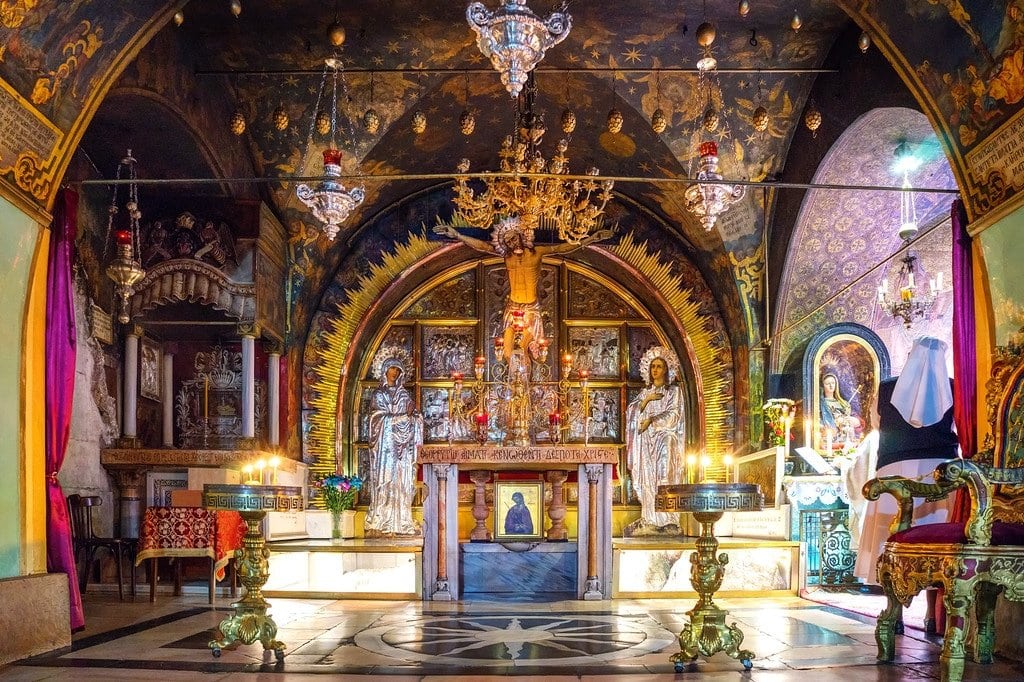
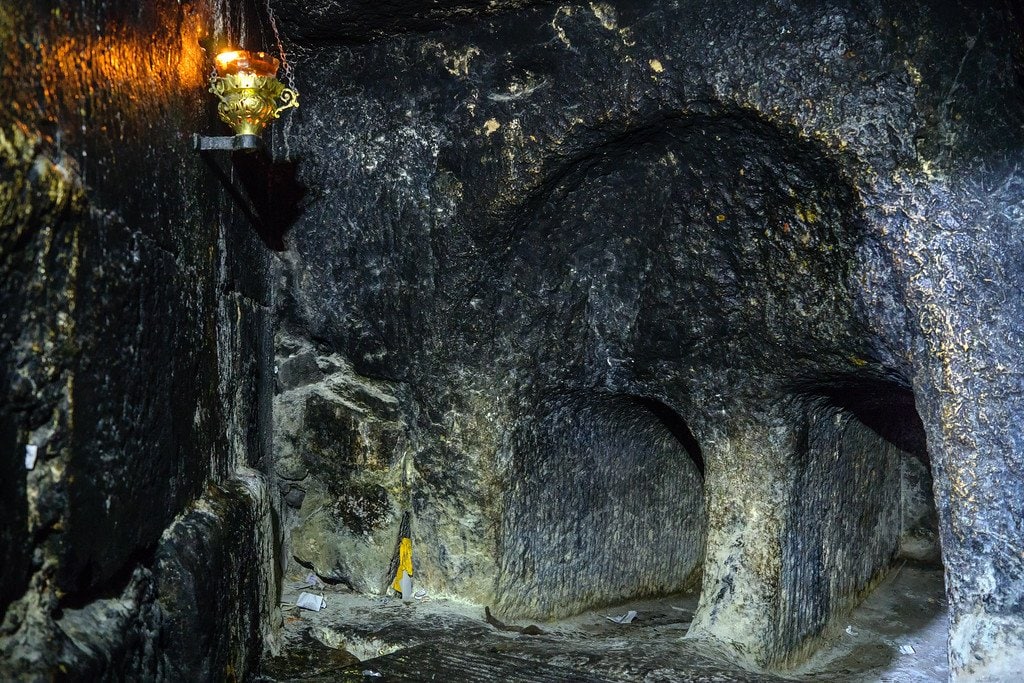
Tips For Visiting
The Church of the Holy Sepulchre is a very busy place. It's the end point of the Via Dolorosa with 4 stations of the cross located here. Much smaller than the other important religious sites in Jerusalem, it can be completely packed with tourists.
Unlike the others though, there are no checkpoints or metal detectors.
If you want to get the best photos, arrive early when they open at 5am. Yeah, I know it's early, but you'll have the church pretty much to yourself. Later in the day there will be a huge line of people waiting to visit the Aedicule. As with other holy sites on the list, dress modestly.
Church of Holy Sepulchre Hours
- Summer: 5am - 8pm
- Winter: 4am - 7pm
- Feeling adventurous? Spend the night there!
Jerusalem Religious Site Tours
If you’re the type of person who prefers joining a tour, there are guided tours of the religious sites in Jerusalem, some of which begin in Tel Aviv.
Where To Stay In Jerusalem
I based myself from Jerusalem for a few days, and had a wonderful trip. You really need to hang out for more than a day to experience the best of it.
If you’re wondering where to stay in Jerusalem here are my recommendations:
Best Places To Stay In Jerusalem
[su_row class=""]
[su_column size="⅓" center="no" class=""]
Budget
Abraham Hostel
[/su_column]
[su_column size="⅓" center="no" class=""]
Mid-Range
National Hotel
[/su_column]
[su_column size="⅓" center="no" class=""]
Luxury
Herbert Samuel Hotel
[/su_column]
[/su_row]
Jerusalem The City Of Peace
The word Jerusalem means "City of Peace" in Hebrew. But peace has never been easy here. The holiest city in the world has been fought over for thousands of years while also attracting millions of faithful pilgrims from all backgrounds.
The city of Jerusalem is a special place with fascinating historic, religious, and archeological sites to see. ★
[su_box title="Travel Planning Resources For Jerusalem" style="noise" box_color="#333333" title_color="#FFFFFF" radius="3" class="resource-box"]
Location: Jerusalem, Israel
Packing Guide
Check out my travel gear guide to help you start packing for your trip. Pick up a travel backpack, camera gear, and other useful travel accessories.
Book Your Flight
Find cheap flights on Skyscanner. This is my favorite search engine to find deals on airlines. Also make sure to read how I find the cheapest flights.
Rent A Car
Discover Cars is a great site for comparing car prices to find the best deal. They search both local & international rental companies.
Book Accommodation
Booking.com is my favorite hotel search engine. Or rent apartments from locals on Airbnb. Read more about how I book cheap hotels online.
Protect Your Trip
Don’t forget travel insurance! I’m a big fan of World Nomads for short-term trips. Protect yourself from possible injury & theft abroad. Read more about why you should always carry travel insurance.
Recommended Guidebook: Lonely Planet Israel & Palestine
Suggested Reading: The Lemon Tree
[/su_box]
Enjoy This Post? Pin It!
[su_row class=""]
[su_column size="½" center="no" class=""]

[/su_column]
[su_column size="½" center="no" class=""]
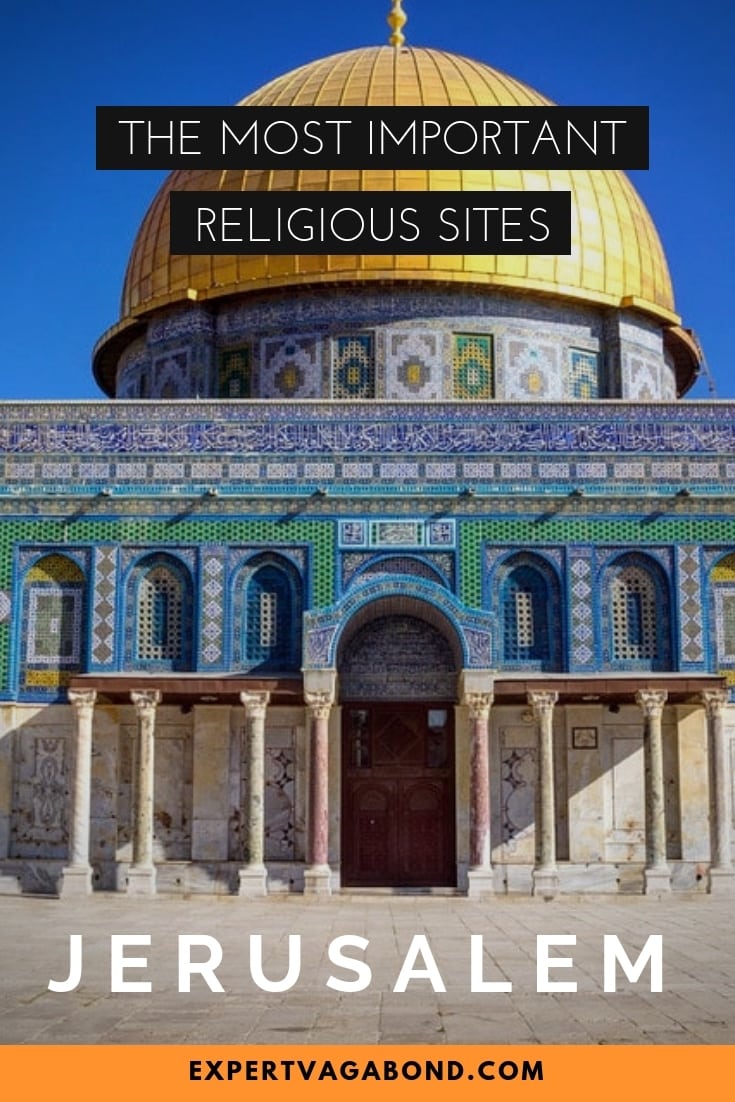
[/su_column]
[/su_row]
READ MORE ISRAEL TRAVEL TIPS
I hope you enjoyed my guide on religious sites in Jerusalem! Hopefully you found it useful. Here are a few more wanderlust-inducing articles that I recommend you read next:
Have you ever visited Israel's religious sites? Do you have some recommendations? Drop me a message in comments!

